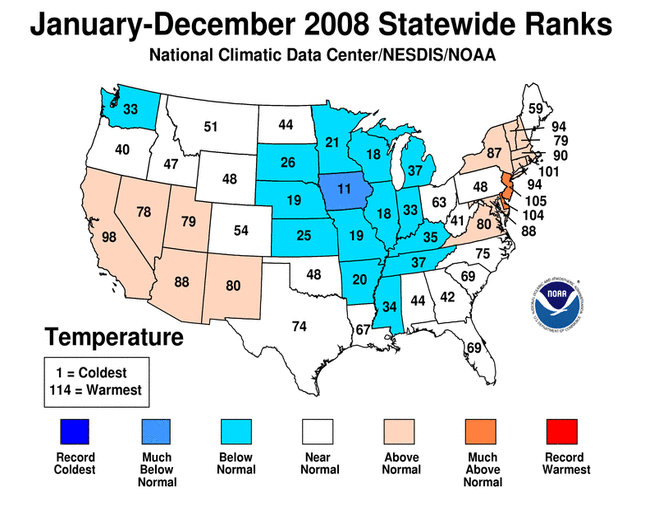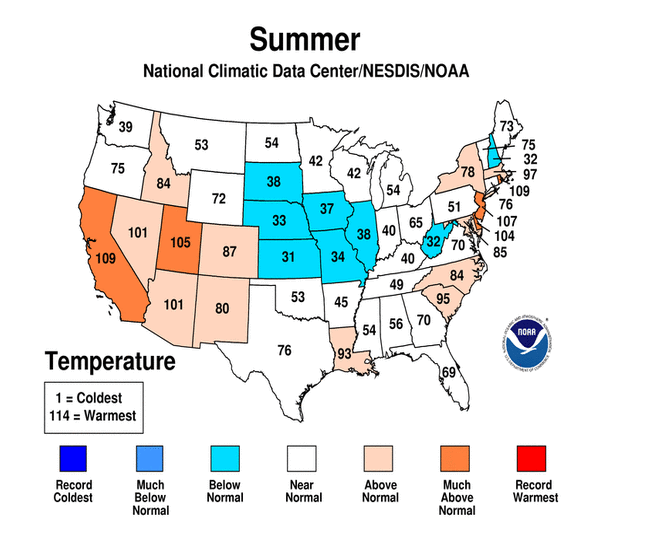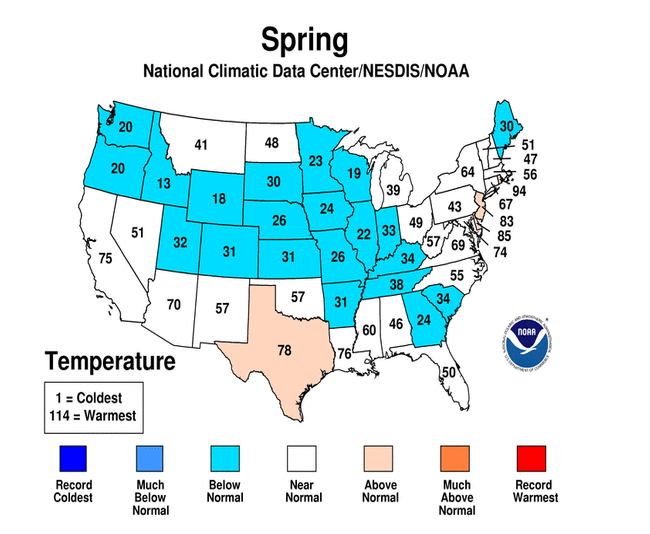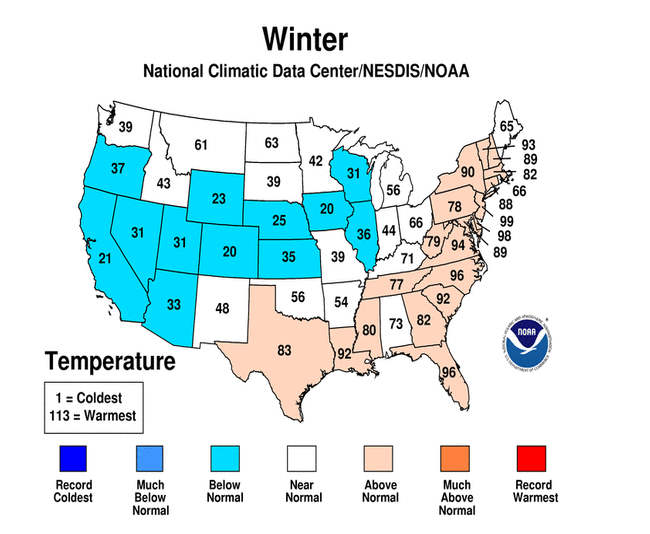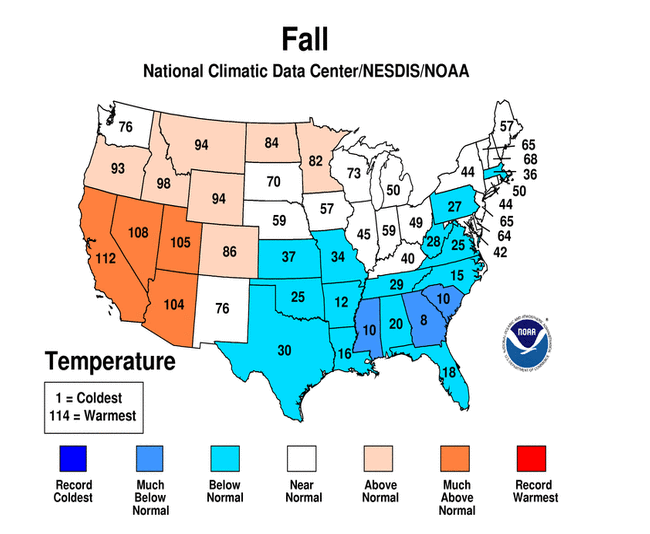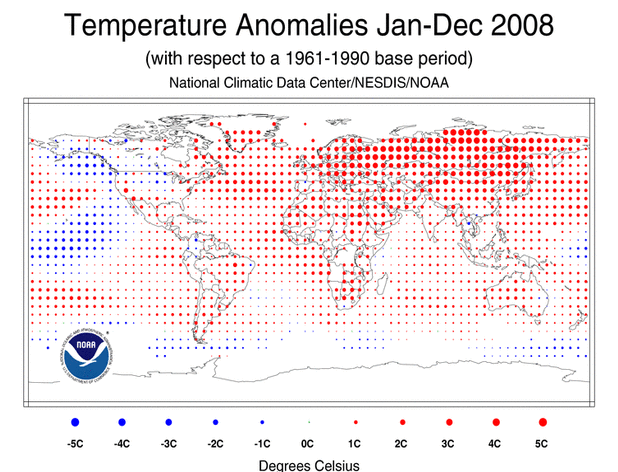
Year 2008 Global Climate Summary
NEWS from NOAA: Year 2008 Global Temperature Ties as Eighth Warmest on RecordJanuary 14, 2009: The year 2008 tied with 2001 as the eighth warmest year on record for the Earth, based on the combined average of worldwide land and ocean surface temperatures through December, according to a preliminary analysis by NOAA’s National Climatic Data Center in Asheville, N.C. For December alone, the month also ranked as the eighth warmest globally, for the combined land and ocean surface temperature. The assessment is based on records dating back to 1880. The analyses in NCDC’s global reports are based on preliminary data, which are subject to revision. Additional quality control is applied to the data when late reports are received several weeks after the end of the month and as increased scientific methods improve NCDC’s processing algorithms. NCDC’s ranking of 2008 as the eighth warmest year compares to a ranking of ninth warmest based on an analysis by NASA’s Goddard Institute for Space Studies. The NOAA and NASA analyses differ slightly in methodology, but both use data from NOAA's National Climatic Data Center – the federal government's official source for climate data. Global Temperature Highlights – 2008
Other Global Highlights for 2008
|
| The following table shows the temperature anomalies for Year 2008. Red is above normal and blue is below normal with the size of the dot corresponding to the magnitude of the anomaly (i.e. larger dots mean larger temperature anomalies). |

The following graph shows the global temperature trend (Anomalies) from 1880 through Year 2008. Graph produced by NCDC.
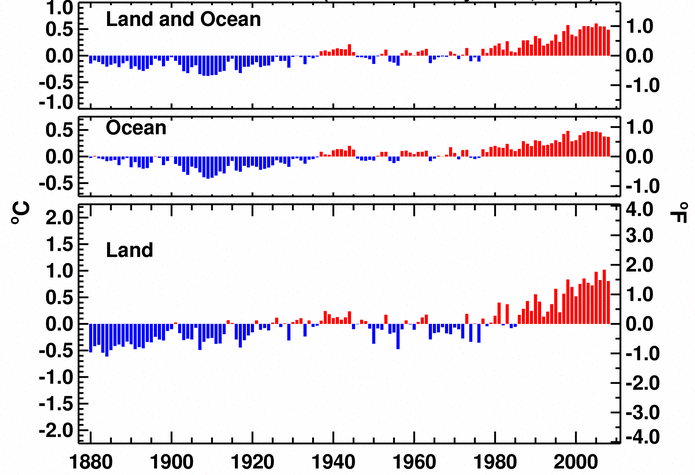
| January- December |
Anomaly | Rank | Warmest Year on Record |
|---|---|---|---|
GlobalLandOcean Land and Ocean |
+0.81°C (+1.46°F) +0.37°C (+0.67°F) +0.49°C (+0.88°F) |
6thwarmest 10th warmest 8th warmest |
2007 (+1.02°C/1.84°F) 2003 (+0.48°C/0.86°F) 2005 (+0.61°C/1.10°F) |
Northern HemisphereLandOcean Land and Ocean |
+0.89°C (+1.60°F) +0.40°C (+0.72°F) +0.59°C (+1.06°F) |
5th warmest 9th warmest 8th warmest |
2007 (+1.18°C/2.12°F) 2005 (+0.54°C/0.97°F) 2005 (+0.72°C/1.30°F) |
Southern HemisphereLandOcean Land and Ocean |
+0.54°C (+0.97°F) +0.35°C (+0.63°F) +0.38°C (+0.68°F) |
6th warmest 10th warmest 9th warmest |
2005 (+0.81°C/1.46°F) 1998 (+0.50°C/0.90°F) 1998 (+0.53°C/0.95°F) |
| The 1901-2000 average combined land and ocean annual temperature
is 13.9°C (56.9°F), the annually averaged land temperature for the same
period is 8.5°C (47.3°F), and the long-term annually averaged sea
surface temperature is 16.1°C (60.9°F). |
| The following graph shows the trend (Anomalies) in Global Average Temperature, 1880-2008. |

| The following maps show the state rankings of temperature for the year and for each of the 4 seasons. |
